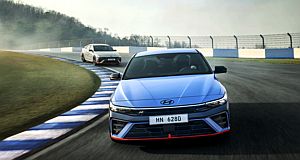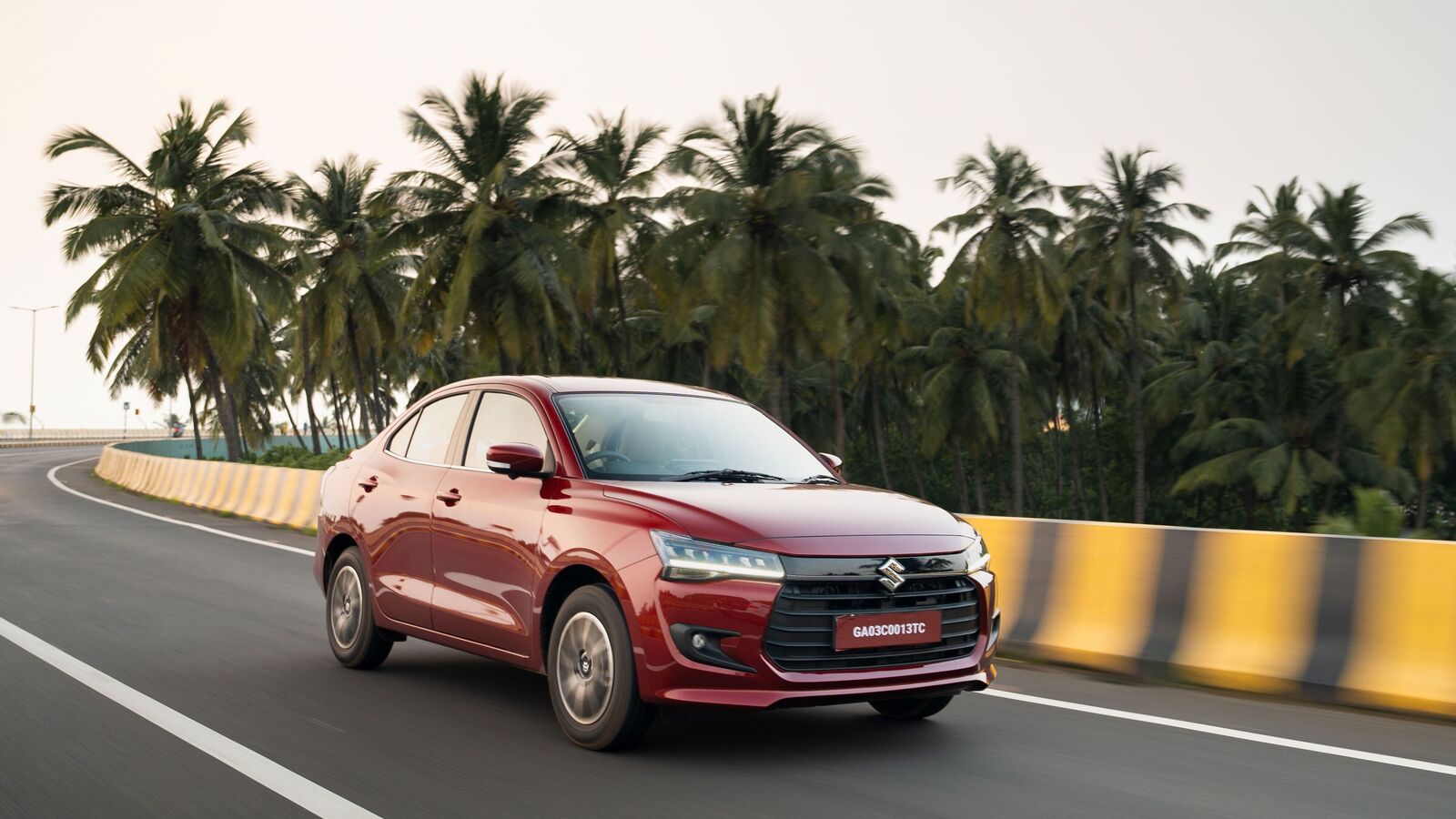Overview
FACELIFT? No, the updated Hyundai i30 Sedan N has seen more than just some cosmetic adjustments… some of which you might find a bit questionable.
But beneath the new red stripes and revised front and rear designs, there’s a reworked suspension damper tune, updated steering parts, new chassis components, a stiffer frame, extra brake hose insulation for fade resistance, redone stability control tuning and even redesigned engine mounts to lessen axle-tramp from a standstill.
Those changes will no doubt appease the enthusiast, but for the daily driver there are other spec’ adjustments that improve the value equation somewhat, considering the new model is $1800 more expensive at $52,000 +ORCs. The list price applies to either the six-speed manual and eight-speed dual-clutch auto, and the only options are premium paint ($595) and a sunroof ($2000).
Familiar from the last i30 Sedan N is a 2.0-litre turbo-petrol four-cylinder engine, with peak outputs of 206kW (at 6000rpm) and 392Nm (at 2100-4700rpm). It still has multiple N driving modes including configurability to the steering, suspension and powertrain response, and there’s N Grin Shift auto rev matching, too.
The official combined cycle fuel efficiency number is 8.5L/100km for the manual, and 8.3L/100km for the auto models – which is slightly higher than the pre-facelift versions. You won’t see anything near that if you take it to the track, though.
There’s a five-year/unlimited kilometre warranty for the car, and enthusiasts, take note – Hyundai covers the vehicle for track use, but not racing (see the terms and conditions before you buy) and there’s also a lifetime capped-price service schedule which, if you maintain with the brand, includes lifetime roadside assistance.
Unlike some other models in the standard i30 Sedan range, the Sedan N requires maintenance every 12 months/10,000km, and the capped-price servicing plan over the first five years/50,000km averages out at $359 per visit.
The i30 Sedan N is considerably bigger than the N hatch, stretching 4710mm (2720mm wheelbase), with a large boot capacity of 474 litres, not to mention a space-saver spare wheel under the boot floor. The standard sedans feature a more practical space, though, as the N has a stiffening bar positioned behind the rear seatbacks that means your load-through capability is muted.
N models get some specific interior finishing to set them apart from cheaper versions with leather appointed trim and sports front seats – but oddly, the driver’s seat (which features electric adjustment and memory settings) isn’t as easy to position as in the lower spec’ versions.
There’s also a black N badge on the steering wheel, red stitching, and N mode buttons on the wheel. The cabin has twin 10.25-inch displays, the media screen incorporates Apple CarPlay and Android Auto, but also has built-in satnav, and an eight-speaker Bose sound system.
A six-foot adult can slide in behind a similarly sized driver with a bit of space to spare, plus for family buyers there are bottle holders, directional air-vents, two new USB-C charge ports, and the expected ISOFIX points in the window seats, and three top-tether points.
Driving impressions
The most impressive thing about the revisions to the i30 Sedan N is that it still retains its “hooligan” and “corner rascal” characteristics, but it’s now more liveable in day to day scenarios.
The revised suspension dampers and updated steering make it a more enjoyable car to drive in urban situations, with less of the previous car’s propensity to clang and bang over back streets.
This newly rethought i30 Sedan N isn’t as soft as some rivals, though. It still has an crisp tune to the damping even in the most comfort-focused setting, and in the full N mode it’s probably a bit much for standard country roads.
The steering is smidge more respectful, too. Previously it was great, but it just feels a touch more urban friendly. In more demanding situations you still get a quick point-to-point and point-and-shoot experience, with fast responses, and a good amount of feel through the wheel.
There’s a locking front differential which you can feel working when you’re really up it, as it helps to get a bit more balance out of the bends as you power out. It’s not devoid of torque steer, but is more limited than you might expect from a front-wheel drive car pumping out these kinds of figures.
And thankfully, the throttle-down response has been improved with those new engine mounts, which notably reduce the amount of axle-tramp when you flatten it from a stop (or even in second-gear, in the pre-facelift).
The engine is a corker, too. It’s not “quick-EV” fast with a 0-100km/h of 5.3 seconds, but it has far more character than any car at this price with a plug.
There’s a manageable power delivery in Normal driving mode, but when you engage N mode you get the best out of it, with strong response, linear power delivery and a heck of a soundtrack to accompany it, with exhaust pops and blatts on lift-off.
I drove both the six-speed manual with its hefty-feeling clutch (stallable in stop-start driving…. I even saw one of the racing driver instructors stall it), and the eight-speed wet dual-clutch auto. The latter is the pick for liveability, but the former is the fun one for the track-focused buyer.
The i30 Sedan N remains a terrific alternative to the Subaru WRX, and a far more affordable family car option than a Civic Type R or VW Golf R.




